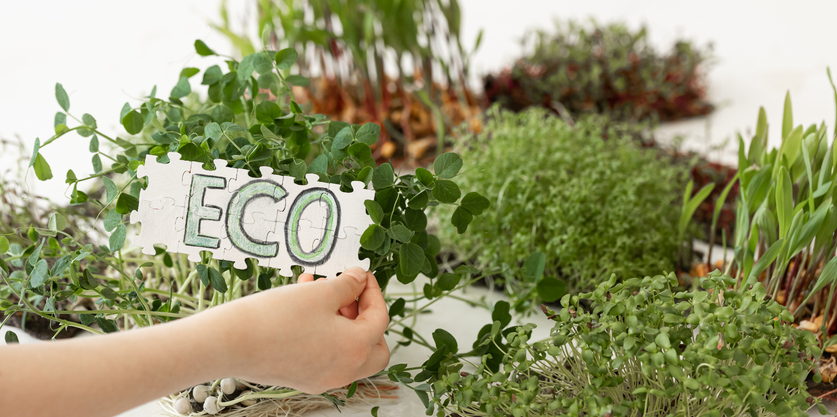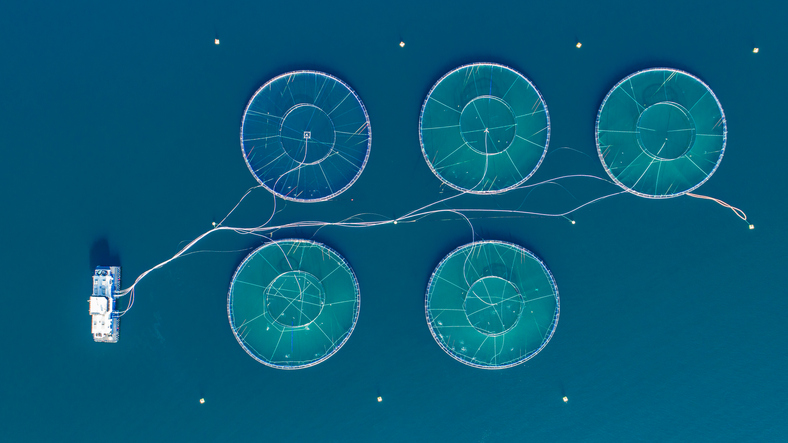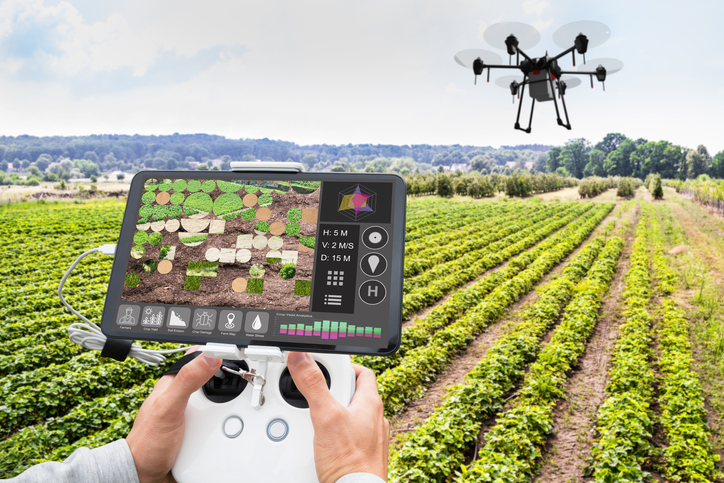Reviving Agriculture: Zero Budget Natural Farming
For over 160 years, humans have been using synthetic nitrogen, phosphorus, and potassium fertilizers (ammonia) without paying heed to soil health and the carbon/nitrogen/water cycle. Today, we are at the crossroads of extreme climate change, dead zones, and health pandemics, compelling us to rethink our agriculture practices and methods. Zero-budget natural farming (ZBNF) can answer unsolved queries. This blog will cover how agriculture is moving towards age-old natural farming globally and why it is the most sustainable and conducive choice in our hands.
Decoding Natural Farming- Unrooted Cognizance of Soil Health
Agriculturists/farmers often don’t understand soil chemistry and biology since soil health is a complex, natural, and ecological phenomenon. Natural plant-fertile soil is formed due to the presence of various microorganisms, such as earthworms, springtails, mites, millipedes, centipedes, bacteria, and fungi, all in a symbiotic and cyclic relationship. In reality, soil is a multiphase body of earth’s pedosphere.
Earthworms and insect larvae burrow the upper soil, creating passages for air and pores for water absorption. Plant-eating microorganisms eat plant litter; other microorganisms feed on animal residue to convert it into Soil Organic Matter (SOM). Bacteria then break down SOM into nitrogen/phosphorus/sulfur, which plants require for growth. Plants, in turn, provide CO2 to bacteria and fungi, forming key mutual relationships.
The deep plant roots developed via this natural progress prevent upper-layer soil erosion and thus help maintain the soil’s natural, healthy ecosystem. Uprooting the earth’s soil of this natural process causes moisture-less and nutrient-less land, compelling agriculture growers to use synthetic ways to add to crop nutrients.
Decoding Natural Farming – Increased Man-Made Entropy in the Biosphere
Excessive use of chemical fertilizers disturbs the soil’s natural nitrogen, CO2, pH, aeration, and moisture content. Ammonia-based fertilizers sprayed on plants don’t allow the crops to take nutrients (phosphorus/nitrogen) from the soil, and thus, these synthetic fertilizers often (during rains/excess) run down streams, water creeks, rivers, oceans, and gulfs. That nitrogen in river beds and oceans builds algal blooms, which take up water’s oxygen and kill marine life and reefs. The oceans hold 60% more carbon than the atmosphere, increasing human-induced entropy.
Rich soils sequester carbon naturally, whereas agroecosystems disrupt the Soil Organic Carbon (SOC) levels, which act as a proxy for SOM. Soil SOC levels are measured by plant respiration (photosynthesis), root biomass, plant/organic litter decomposition (SOM/humus), and transfer of carbon compounds to soil microbes like mycorrhizae. High SOC levels suggest a high level of SOM. Farming is not just affected by climate change but also greatly affects it. Thus, it is imperative time that we shift to organic and natural farming practices.

Figure 1: Decomposition of Roots and Root Products by Soil Fauna and Microbes Produce Humus
Sustainable Ways to Increase SOC
The other sustainable way to improve soil organic carbon (SOC) is to use no-tillage, as excessive tillage increases soil erosion due to wind and water erosion. The ways to enhance SOM content are contour plowing/terracing, organic composts, and the use of cover crops/resides. Excessive or heavy tillage often leads to greater aeration, increased water retention, and loss of topsoil nutrients. Studies have been conducted to elucidate that crops give better yields with greater consideration of SOC of regionally specific levels.
| Sr. no. | Management Practice | Effect |
| 1. | Reduced tillage/ no-tillage | Reduced C loss |
| 2. | Erosion control (contour ploughing, terracing | Reduced C loss |
| 3. | Reduced tillage/ no-tillage | Increased C input |
| 4. | Use of cover crops | Reduced C loss/Increased C input |
Table 1: Sustainable Practices to Improve Soil SOC
Decoding Zero Budget Natural Farming
In Australia, organic farming was started in the 1980s by Bob Williams and Alex de Podolinski, and the state of Sikkim in India is 100% organic. Fundamentals of zero-budget natural farming (ZBNF) include zero dependence on high-cost artificial ways of farming, whether using GM seeds, artificial fertilizers, or synthetic pesticides. The word zero still can be argued on the basis that when a farmer uses natural seeds, natural manure, and organic pesticides/fungicides, they are still incurring costs. Yet, it is comparatively low/low debt.
Zero Budget Farming for Small Farmers
Most ZBNF farmers practice pure ZBNF farming practices like ZBNF natural solutions and integrated pest management (IPM) practices like intercropping, sowing border crops, and using organic compost. The simultaneous growth of long—and short-duration crops helps the farmers realize the input cost in the shorter term by harvesting shorter-duration crops. Further, small and marginal farmers have financial constraints; hence, this method of agriculture is a great contributor to augmenting their income and preventing them from a vicious cycle of debt.
Key Market Numbers Around Natural Farming
As farmers use natural inputs, they can expect natural results that are environmentally friendly. Statistics reveal that about 1.6% (2021) is the organic farming share, which is some 76.4 million hectares of agricultural land. Australia (35.7 million hectares), Argentina (4.1 million hectares), and France (2.8 million hectares) are the top countries focussing on natural farming. The top organic markets include the US (48.6 billion euros), Germany (15.9 billion euros), and France (12.7 billion euros), a total of some 125 billion euros in 2021.
Decoding Zero Budget Natural Farming
Soil is the stomach of the plant from which its various parts take specific nutrients as and when required. Soil microbiome work in a complex and natural/mutual interaction between millions of soil bacteria, fungi, and other microorganisms. Soil bacteria and fungi break down dead matter, another kind protects the plant from bacterial diseases, and yet another kind could create diseases (pathogenic). Healthy plants usually are those where a balance of microbes like bacteria, fungi, protozoa, actinomycetes, nematodes, algae, and other microorganisms work in cohesion, and the plant is able to keep stresses naturally at bay.
Plants need nutrients from the soil, not excessive nutrients, which often happens with the use of chemical fertilizers, reducing plants’ self-managing spirit. Healthy crops need their rich soils, which are usually unavailable as the farmer is mainly focused on fetching greater yields, causing the land to become infertile after a single harvest. On the contrary, with a focus on soil health and the addition of organic fertilizers, plants can get their nutrients more optimally and are able to fight abiotic stresses naturally. The soil also helps buffer substances in the soil and acts as a natural water filter.
| Ecosystem Service | Soil Functions |
| Soil Formation | 1. Weathering of primary minerals and release of nutrients. 2. Transformation and accumulation of organic matter. 3. Creation of structures (aggregates, horizons) for gas and water flow and root growth. 4. Creation of charged surfaces for ion retention and exchange |
| Primary Production | 1. Medium for seed germination and root growth. 2. Supply of nutrients and water for plants. |
| Nutrient Cycling | 1. Transformation of organic materials by soil organisms. 2. Retention and release of nutrients on charged surfaces |
| Water Quality Regulation | 1. Filtering and buffering of substances in soil water. 2. Transformation of contaminants. |
| Water Supply Regulation | 1. Regulation of water infiltration into soil and water flow within the soil. 2. Drainage of excess water out of soil and into groundwater and surface water. |
Table 2: Types of Soil Functions
Study Conducted on Impact of Fertilizers on Soil Microbial Community
Many studies have been conducted on the value of organic fertilizers v/s chemical fertilizers. The one big difference between the two is that organic fertilizer feeds the soil (long term), and chemical fertilizers don’t nourish the soil and only meet superficial, short-term plant nutrient needs. The farmer can’t fully know what crops/pants need at what stage. Plants’ nutrient needs are more stoichiometric, needing varying amounts of nitrogen, potassium, carbon, phosphorous, right soil moisture (pH), water, calcium, magnesium, and sulfur.
The plant needs its own self-fighting mechanism, which strengthens from the presence of healthy organic soils. A study conducted on the sandy farmland ecosystem of Inner Mongolia concluded that fertilizers affect the microbe diversity of the soil. Fertilizers indirectly affect the soil’s bacterial composition by reducing pH and soil fungal makeup and shooting total soil nitrogen. It was found that manure alone or a combination of chemical fertilizers along with manure was recommended to maintain the soil microbial community
Global Chemical Fertilizers Market V/S Organic Fertilizers
The global chemical fertilizer market for 2023 is valued at $196.96 billion, which will grow to $241.87 billion by 2030 at a CAGR of 3.48228%, as per Statista data.

Figure 2: Global Chemical Fertilizer Market in 2020, 2023, with a Forecast for 2030
According to Statista data, the worldwide market value of organic fertilizers in 2023 is estimated at $11.72 billion and will reach $22.38 billion by 2030, with a CAGR of 10.43%. Organic fertilizers and natural farming practices will be in high demand.
Fundamentals of India’s Zero Budget Natural Farming
The core of India’s ZBNF includes four foundation stones: Jeevaamrita (a Sanskrit word meaning living being and amrita meaning that which extends life), Bijamrita (Beej meaning seed and amrita meaning magical liquid), Acchadana (Mulching), and Whapasa (moisture). Jeevaamrita is the first process of preparing organic manure to provide soil nutrients and increase earthworms in the soil, and the process prevents fungal and bacterial diseases.
Beejamitra is the seed liquid to protect young seeds, and their roots from fungus, soil-borne, and seed-borne diseases. Acchadana means mulching, a process of retaining soil moisture by covering the surface with straw mulch and reducing evaporation. Whapsa is the irrigation process, with emphasis on minimal/reduced irrigation, and should be practiced at noon in alternate furrows. Under the process, only organically made pesticides/fungicides are used, like Agniastra, Brahmastra, Neemastra, Dashparni ark, Jungle kiKandi, and Saptdhanyankur ark.
| Methods | Preparation | Benefits |
| Jivamitra | As a catalytic agent, promoting the activity of microorganisms in soil and increasing earthworm activity. It also helps prevent | It is a seed treatment that is equipped to protect young roots from fungus and soil-borne and seed-borne diseases. |
| Bijamitra | It conserves soil moisture by reducing evaporation. | It is a catalytic agent, promoting the activity of microorganisms in soil and increasing earthworm activity. It also helps prevent |
| Acchadana (Mulching) | It can be done by using soil mulch and straw mulch | It provides nutrients and acts as a catalytic agent, promoting the activity of soil microorganisms and increasing earthworm activity. It also helps prevent fungal and bacterial diseases. |
| Whapsa (Moisture) | It conserves soil moisture by reducing evaporation. | It is a condition where air molecules and water molecules are present in soil. |
Table 3: Basic Pillars of ZBNF
Conclusion
Natural farming comprises a small portion of total commercial farming, yet it is one of the most promising agriculture methods/ideologies/philosophies. Arguments like whether organic farming can feed 8.1 billion people are usually made by people who are concerned with large monoculture farming, commercial farming, or extensive farming without considering themselves with long-term soil health and ecological balance. One can begin with 50% organic and 50% unsustainable/specious farming practices and gradually move to more organic farming year by year. Moreover, naturally grown crops/plants can perform better in adverse weather conditions like drought by 40%.



